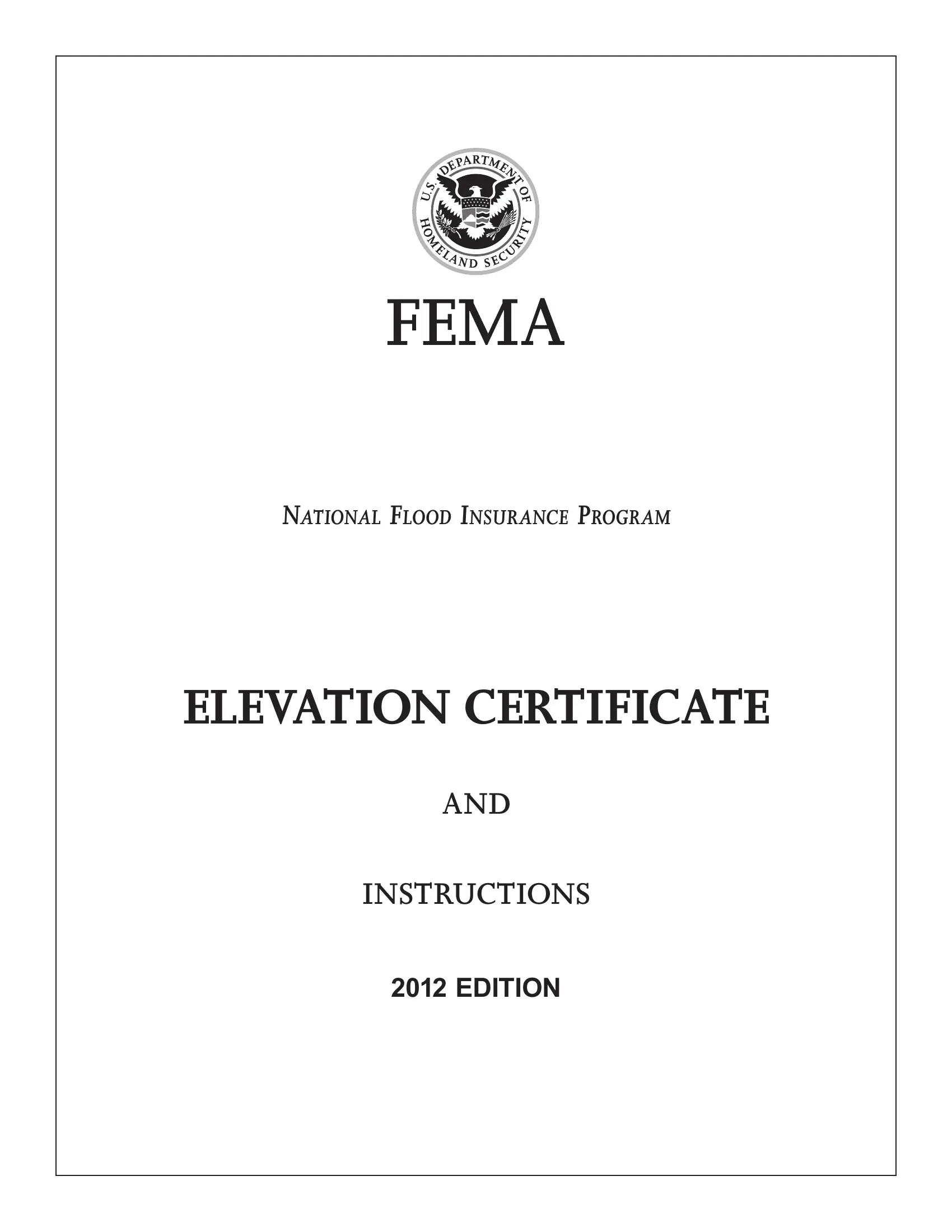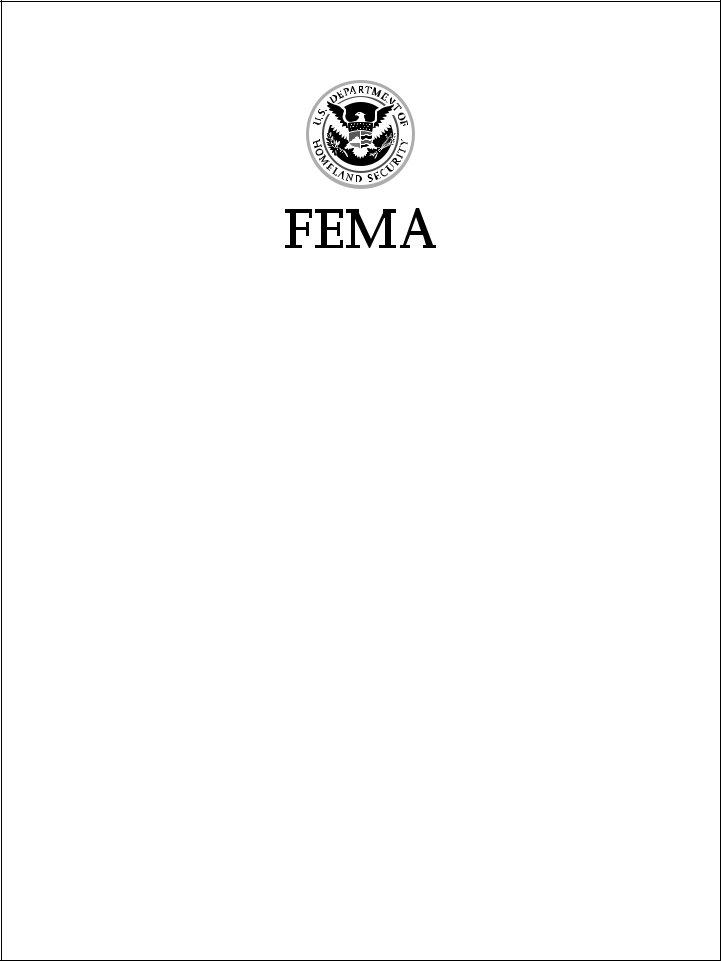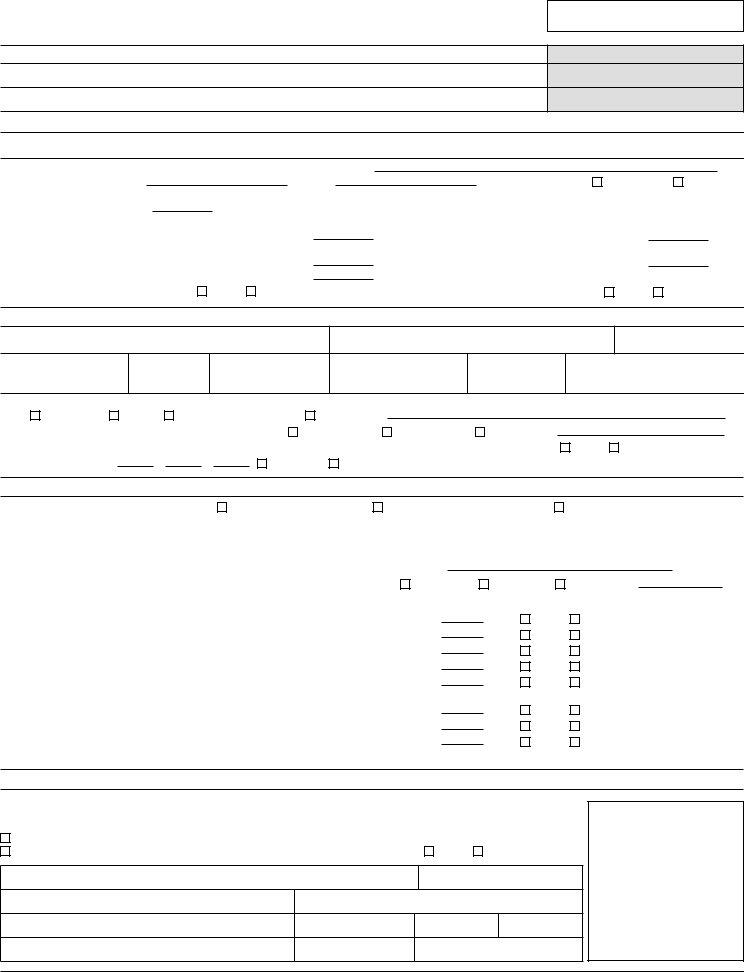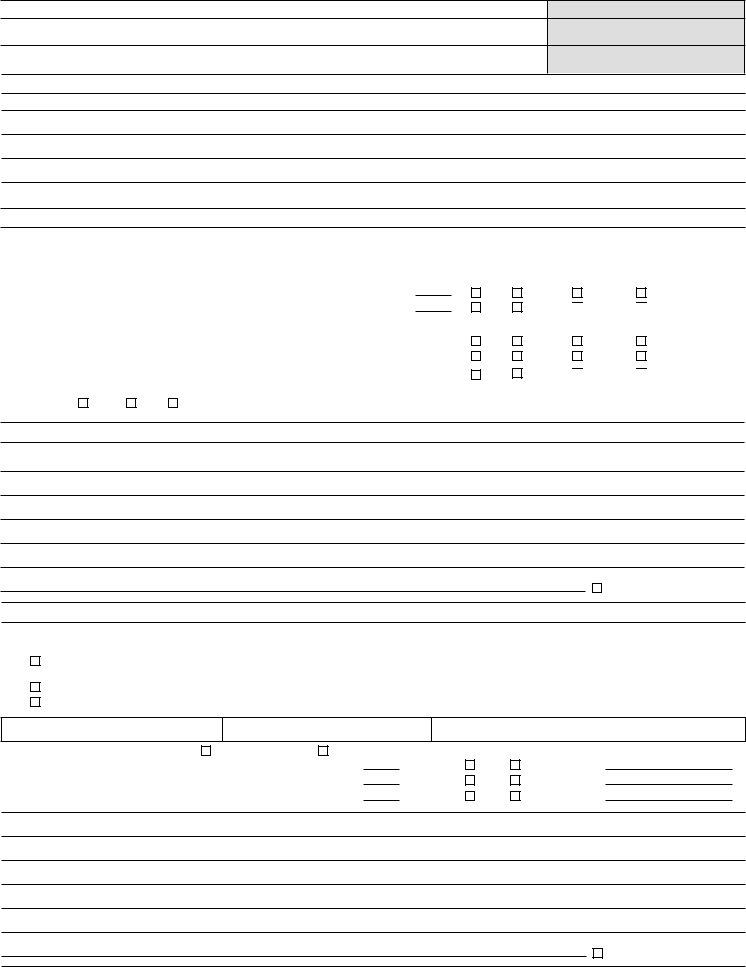Working with PDF forms online is actually a piece of cake with this PDF editor. You can fill out AO here painlessly. To retain our editor on the cutting edge of convenience, we aim to put into action user-oriented features and improvements regularly. We are routinely looking for suggestions - assist us with remolding how you work with PDF forms. If you're seeking to begin, this is what it will require:
Step 1: Hit the "Get Form" button above on this page to open our PDF editor.
Step 2: After you access the online editor, you will notice the form prepared to be filled out. Other than filling in different blanks, you can also perform some other things with the Document, that is adding any words, modifying the initial text, adding illustrations or photos, placing your signature to the PDF, and much more.
In order to fill out this form, ensure you provide the required details in every blank:
1. While completing the AO, be certain to include all of the needed blanks within the associated form section. This will help to expedite the process, making it possible for your information to be processed swiftly and appropriately.
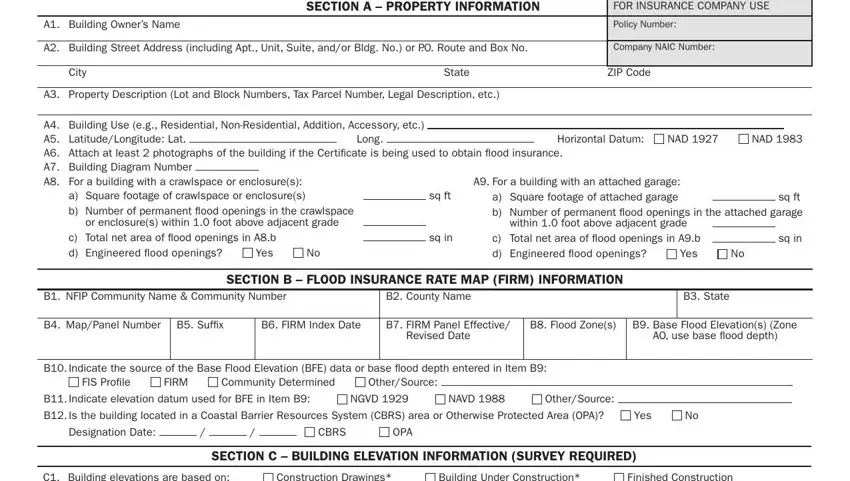
2. When the previous segment is complete, you're ready put in the required details in C Elevations Zones AA AE AH A, Cah below according to the, Benchmark Utilized, Vertical Datum, Indicate elevation datum used for, NGVD, NAVD, OtherSource, Check the measurement used, a Top of bottom loor including, b Top of the next higher loor, c Bottom of the lowest horizontal, d Attached garage top of slab, e Lowest elevation of machinery or, and Describe type of equipment and so that you can go further.
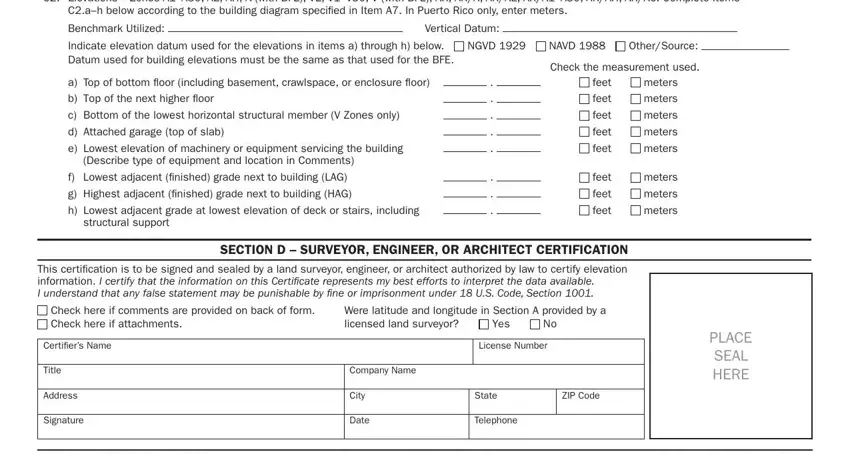
3. This 3rd step should also be rather easy, iMPortAnt in these spaces copy the, FOR INSURANCE COMPANY USE, Building Street Address including, Policy Number, City, State, ZIP Code, Company NAIC Number, Copy both sides of this Elevation, SECtion D SUrvEYor EnGinEEr or, Comments, Signature, Date, SECtion E BUilDinG ElEvAtion, and For Zones AO and A without BFE - these empty fields needs to be filled in here.
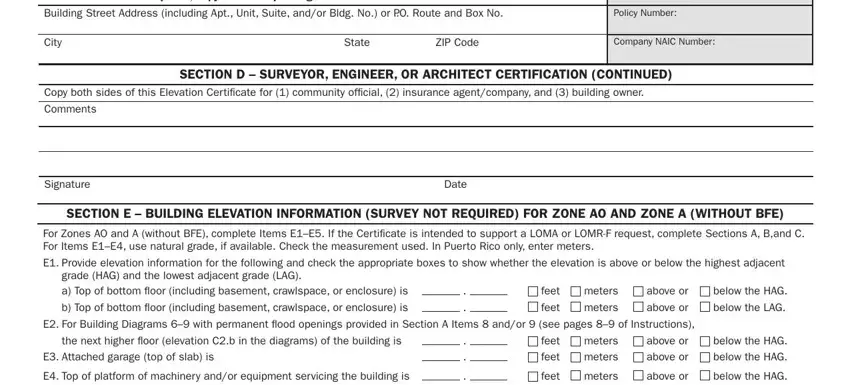
It's simple to get it wrong when filling in the State, thus make sure to go through it again prior to when you send it in.
4. To go onward, your next step involves filling out a few fields. Examples of these are E Zone AO only If no lood depth, ordinance, Yes, Unknown The local oficial must, SECtion F ProPErtY oWnEr or, The property owner or owners, Property Owner or Owners, Address, Signature, Comments, City, Date, State, ZIP Code, and Telephone, which you'll find fundamental to moving forward with this particular process.
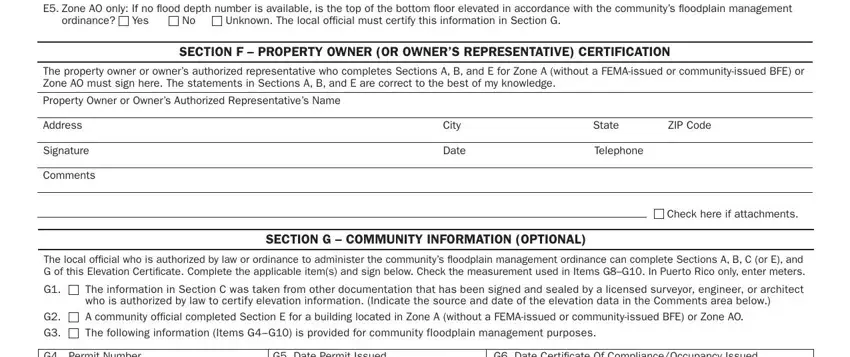
5. The pdf should be finalized by filling in this section. Further you have a comprehensive set of blank fields that must be completed with accurate details for your document submission to be accomplished: G Permit Number, G Date Permit Issued, G Date Certiicate Of, G This permit has been issued for, New Construction, G Elevation of asbuilt lowest loor, Substantial Improvement, G BFE or in Zone AO depth of, G Communitys design lood elevation, Local Oficials Name, Community Name, Signature, Comments, Title, and Telephone.

Step 3: Prior to submitting your document, make sure that form fields were filled in correctly. When you’re satisfied with it, click “Done." Sign up with FormsPal now and instantly access AO, ready for downloading. Each edit you make is handily preserved , making it possible to edit the form further anytime. FormsPal guarantees your data privacy by using a secure method that never records or shares any private information typed in. You can relax knowing your paperwork are kept safe whenever you work with our tools!
